Welcome to our free classical music site

Do you write about classical music? Are you a blogger? Want to team up with Classical Connect? Send us a message, let's talk!

Do you write about classical music? Are you a blogger? Want to team up with Classical Connect? Send us a message, let's talk!
October 3, 2016. Schütz et. al. Three famous composers were born this week: Heinrich Schütz, probably the most important German composer of the “pre-Bach” era, on October 8th of 1585;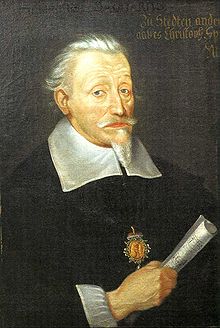 Giuseppe Verdi, the greatest Italian opera composer of the 19th century, on October 9th of 1813, and Camille Saint-Saëns, a very popular Frenchman, also born on October 9th, but of 1835. We've written about all three many times, for example here, here and here, so today we’ll illustrate their lives through several compositions. Schütz worked during a transitional period: he was born when the greatest Renaissance composers such a s Palestrina or Orlando di Lasso were still active; when he died in 1672, Baroque was all the rage. Schütz was a traditionalist. He was deeply influenced by Giovanni Gabrieli, with whom he studied in Venice from 1608 through 1612. It so happened that the young Schütz became a choir-boy at the court of Landgrave Moritz of Hessen-Kassel, a generous patron of the arts. At the time, Italy was the musical center of the world, and the Landgrave used to send some of his more gifted musicians to study there, providing them with a generous stipend. Early in the 17th century, Gabrieli was one of the most famous living composers in Europe, so Landgrave sent his talented young charge to study in Venice. The plan was for Schütz to stay there for two years, but Gabrieli was so impressed with his pupil’s progress that he asked Moritz to allow Schütz to stay in Venice another year, “since he is doing so well not only in composition but also in organ playing,” as Gabrieli put it. Even though Gabrieli was almost 30 years older than Schütz, it’s clear that the teacher and the pupil developed very close ties: in his will Gabrieli bequeathed his rings to Schütz. Gabrieli died in 1612, and Schütz left Venice soon after. Gabrieli was famous for his polichoral works, and here is Schütz’s glorious Saul, Saul, was verfolgst du mich?, from Symphoniae sacrae (Book 3), written in a similar style. Book 3 of his “Sacred symphonies” was published in Dresden in 1650. English Baroque Soloists and Monteverdi Choir are led by John Eliot Gardiner.
Giuseppe Verdi, the greatest Italian opera composer of the 19th century, on October 9th of 1813, and Camille Saint-Saëns, a very popular Frenchman, also born on October 9th, but of 1835. We've written about all three many times, for example here, here and here, so today we’ll illustrate their lives through several compositions. Schütz worked during a transitional period: he was born when the greatest Renaissance composers such a s Palestrina or Orlando di Lasso were still active; when he died in 1672, Baroque was all the rage. Schütz was a traditionalist. He was deeply influenced by Giovanni Gabrieli, with whom he studied in Venice from 1608 through 1612. It so happened that the young Schütz became a choir-boy at the court of Landgrave Moritz of Hessen-Kassel, a generous patron of the arts. At the time, Italy was the musical center of the world, and the Landgrave used to send some of his more gifted musicians to study there, providing them with a generous stipend. Early in the 17th century, Gabrieli was one of the most famous living composers in Europe, so Landgrave sent his talented young charge to study in Venice. The plan was for Schütz to stay there for two years, but Gabrieli was so impressed with his pupil’s progress that he asked Moritz to allow Schütz to stay in Venice another year, “since he is doing so well not only in composition but also in organ playing,” as Gabrieli put it. Even though Gabrieli was almost 30 years older than Schütz, it’s clear that the teacher and the pupil developed very close ties: in his will Gabrieli bequeathed his rings to Schütz. Gabrieli died in 1612, and Schütz left Venice soon after. Gabrieli was famous for his polichoral works, and here is Schütz’s glorious Saul, Saul, was verfolgst du mich?, from Symphoniae sacrae (Book 3), written in a similar style. Book 3 of his “Sacred symphonies” was published in Dresden in 1650. English Baroque Soloists and Monteverdi Choir are led by John Eliot Gardiner.
Guiseppe Verdi wrote 25 operas, practically all of them of the highest order. The first two, Oberto and Un giorno di regno, are rarely performed, but his third one, Nabucco, became popular and remained so ever since. Still, considering the incredible wealth of musical material and its quality, Rigoletto, written in 1851 and considered a masterpiece of Verdi’s mid-career, stands out. Just to mention some of the popular arias: the Duke’s aria Questa o quella, Rigoletto’s and Gilda’s duet "Figlia!" "Mio padre!", the Duke’s È il sol dell'anima, followed by the duet Addio, addio. And then Gilda’s amazing aria Gualtier Maldè!... Caro nome – and we’re still in the middle of the first act! There are several dozen great recordings of Rigoletto. Between 1954 and 1964 alone there were probably ten of them, featuring opera giants, like Maria Callas, Giuseppe di Stefano, Mario Del Monaco, Cesare Siepi, Giulietta Simionato, Robert Merrill, Jussi Björling, Ettore Bastianini, Alfredo Kraus, Renata Scotto, Fiorenza Cossotto, Gianni Raimondi, Anna Moffo, Dietrich Fischer-Dieskau, Carlo Bergonzi. What an absolutely astounding decade! Here’s Maria Callas in Gualtier malde! Caro nom, and here – the famous quartet Bella figlia dell’amore from Act III, with Pavarotti, Sutherland, Leo Nucci and Isola Jones.
Camille Saint-Saëns, a rather conservative composer, wrote quite a bit of music that was not of the very first rate, but who hasn’t? Some of his pieces are brilliant, and that’s what counts. Here’s an example, The Carnival of the Animals (Le carnaval des animaux), Andrea Licata conducts the Royal Philharmonic Orchestra.Permalink
September 26, 2016. Brahms’s Klavierstücke, op. 76. In the past we published a series of articles about Brahms’s late piano works: 7 Fantasien, op. 116 (here), 3 Intermezzi op. 117 (here), 6 Klavierstucke op. 118 (here), and 4 Klavierstucke op. 119 (here). Today we’ll publish an article on a piano set he created earlier, sometime between 1871 and 1878, titled 8 Klavierstücke, op. 76.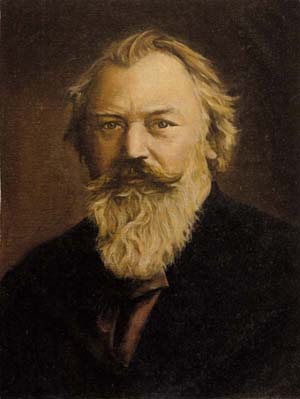 We have two sets of recordings, one made by the English pianist Sam Armstrong, another – by the American, Maya Hartman. ♫
We have two sets of recordings, one made by the English pianist Sam Armstrong, another – by the American, Maya Hartman. ♫
The Eight Klavierstücke, op. 76 was a marked departure for Brahms in the realm of piano music—not since the composition of the Ballades in the mid-1850s had he composed a set of miniatures. The sonata had long since disappeared; the only three Brahms left to us were products of his youth. The piano music of his middle period was dominated by large-scale variation sets. The last of these sets, the Paganini Variations, was also his last work for solo piano before the composition of the 8 Klavierstücke in the late 1870s, a space of fifteen years. Viewed as a part of Brahms’s entire output for the piano, the Klavierstücke and the contemporaneous 2 Rhapsodies, op. 79 form the transition from those Classically-oriented pieces of his youth and middle period, to the deeply introspective Romanticism of his last works for piano, namely, opp. 116-19. With the Klavierstücke, lengthy discourses are abandoned in favor of a greater economy of means, a trend that pervaded most of Brahms’s late music, even in large-scale works, in which fewer and fewer notes were forced to bear an ever increasing portion of a piece’s emotional weight. Concomitantly, there is also a greater emphasis on motivic development, a feature really of all of Brahms’s music, but now driven to even more exacting and imaginative lengths.
The set begins with the fantasia-like F-sharp minor Capriccio. Ominous arpeggios reach up out of the bass register in the opening measures, intermixed with a distinctive stepwise descent through the interval of a third that becomes an important accompanimental figure to the principal melody which later emerges. The melody itself, which appears after a fortissimo close on the dominant, emphasizes two semitone movements within its initial measures—the first, moving upwards, and the latter, downwards. This motif becomes the focus of the Capriccio’s discourse. Initially, beginning on the dominant, its position within the scale and its key is later changed, yet its melodic pattern remains unchanged, as it is woven into the endless accompaniment of broken chords. A strict inversion of the melody even appears immediately before the reprise of the opening fantasia. This reprise, though structurally similar to the opening statement, is greatly changed. The left hand takes the burden of presenting the motivic material while the right now provides brilliant filigree in the upper register. The lengthy coda returns to working out the melody of the middle section, presenting it in octaves against repeated statements in augmentation of descending thirds. However, its final statements take place betwixt a firm tonic pedal in the bass and the return of the fanciful passagework in the treble, as the piece dies away into a conclusion in F-sharp major. (Read more here).Permalink
September 19, 2016. From the 18th century to the 20th. One of the most important French composers of the baroque era and two major composers of the 20th were born this week.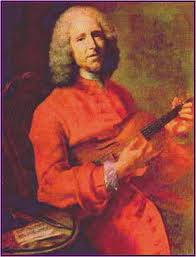 , who followed Lully to become the leading French opera composer, was born on September 25th of 1683 in Dijon, the capital of Burgundy. Little is known about Rameau’s early years: records are few, and he didn’t like to talk about it either. His father was an organist, and Jean-Philippe was taught music from an early age. When he was around 18, he was sent to Milan, to study music, but the visit was short. In 1706, after working as an organist in several churches in the provinces, Rameau went to Paris, where he found a similar position at the Collège (now Lycée) Louis-le-Grand, a very prestigious institution (one of the pupils there was Voltaire, who would later collaborate with Rameau on several operatic and theatrical productions). In 1709 he returned to Dijon to succeed his father as the organist at the church of Notre-Dame. He didn’t stay there long, though: in a couple of years he moved to Lyon, and then to Clermont. All this was transitory, until, in June of 1722, at the age of 38 but still practically unknown, he arrived in Paris, where he would live for the rest of his life. What made him famous was not his music but theoretical treaties on harmony, which were published that year. Four years later he wrote “New System of Music Theory” which established him as a major theorist not just in France, but in all of Europe. Even though he had already published a book of harpsichord music, he was still unknown as a composer. Rameau’s first composition that Parisians ever heard was an inconspicuous incidental music, written for a play staged at a temporary theater during the annual fair in Saint-Germain. The second book for the harpsichord appeared in 1725, and the third, Nouvelles suites de pieces de clavecin, two years later. Nouvelles suites, which included a piece called Les sauvages (here), became popular. Even so, his career wasn’t going anywhere: he couldn’t secure a position of organist at any major Parisian church (even though he tried many times) and he was still better known as a theorist rather than a composer. What Rameau really wanted was to write an opera. He was 50 when he presented the first one, Hippolyte et Aricie; the premier became an event but also created a huge controversy. The opera, first staged on October 1 of 1733 in the Théâtre du Palais-Royal, immediately divided the listening public into two camps: those who liked it and those who felt that it flouts all the principals established by Rameau’s predecessor, Jean-Baptiste Lully, and therefore isn’t good. In any event, Rameau’s reputation as a major opera composer was established, and though 50, he had many productive years ahead of him. Here’s a short section from Act I, Rendons un éternel homage.
, who followed Lully to become the leading French opera composer, was born on September 25th of 1683 in Dijon, the capital of Burgundy. Little is known about Rameau’s early years: records are few, and he didn’t like to talk about it either. His father was an organist, and Jean-Philippe was taught music from an early age. When he was around 18, he was sent to Milan, to study music, but the visit was short. In 1706, after working as an organist in several churches in the provinces, Rameau went to Paris, where he found a similar position at the Collège (now Lycée) Louis-le-Grand, a very prestigious institution (one of the pupils there was Voltaire, who would later collaborate with Rameau on several operatic and theatrical productions). In 1709 he returned to Dijon to succeed his father as the organist at the church of Notre-Dame. He didn’t stay there long, though: in a couple of years he moved to Lyon, and then to Clermont. All this was transitory, until, in June of 1722, at the age of 38 but still practically unknown, he arrived in Paris, where he would live for the rest of his life. What made him famous was not his music but theoretical treaties on harmony, which were published that year. Four years later he wrote “New System of Music Theory” which established him as a major theorist not just in France, but in all of Europe. Even though he had already published a book of harpsichord music, he was still unknown as a composer. Rameau’s first composition that Parisians ever heard was an inconspicuous incidental music, written for a play staged at a temporary theater during the annual fair in Saint-Germain. The second book for the harpsichord appeared in 1725, and the third, Nouvelles suites de pieces de clavecin, two years later. Nouvelles suites, which included a piece called Les sauvages (here), became popular. Even so, his career wasn’t going anywhere: he couldn’t secure a position of organist at any major Parisian church (even though he tried many times) and he was still better known as a theorist rather than a composer. What Rameau really wanted was to write an opera. He was 50 when he presented the first one, Hippolyte et Aricie; the premier became an event but also created a huge controversy. The opera, first staged on October 1 of 1733 in the Théâtre du Palais-Royal, immediately divided the listening public into two camps: those who liked it and those who felt that it flouts all the principals established by Rameau’s predecessor, Jean-Baptiste Lully, and therefore isn’t good. In any event, Rameau’s reputation as a major opera composer was established, and though 50, he had many productive years ahead of him. Here’s a short section from Act I, Rendons un éternel homage.
Andrzej Panufnik, one of the most important Polish composers of the last century, was born on September 24th of 1914. We wrote about this talented composer and great man here. As a youngster he resisted the Nazi occupation, and as an adult – the Soviet takeover of Poland. He defected to the West in 1954. Here’s Panufnik’s Symphony no. 3 (Sinfonia Sacra), from 1963, performed by the Chicago Symphony Orchestra conducted by Sir Georg Solti. It’s about 20 minutes long; even though it’s more traditional than much of his work, it’s very much worth listening to.
Dmitry Shostakovich was born on September 25th of 1906. Here’s his Quartet no. 2, composed in 1944. It’s performed by the Borodin Quartet, a preeminent interpreter of Shostakovich’s works. At the time of the recording, the members were: Rostislav Dubinsky and Yaroslav Alexandrov, violins; Dmitry Shebalin, viola and Valentin Berlinsky, cello. The Quartet was dedicated to Dmitry Shebalin’s father, the composer Vissarion Shebalin, Shostakovich’s close friend.
PermalinkSeptember 12, 2016. Frescobaldi, Cherubini and Schoenberg. Girolamo Frescobaldi, one of the first great keyboard composers, was born on or around September 13th of 1583. We posted a rather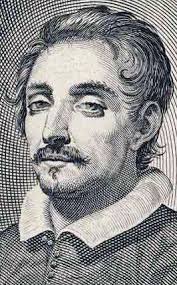 detailed entry about him two years ago, so this time we’ll present some of his compositions. As we mentioned, Frescobaldi, even though he wrote in different genres was best known for his works for the keyboard. At the beginning of the 17th century, the keyboard meant the organ or the harpsichord. One of the major collections of organ pieces Frescobaldi wrote late in his life is called Fiori musicali ("Musical Flowers"). It was published in 1635 in Rome; at the time Frescobaldi was working as the organist at St Peter’s Basilica, a prestigious position. Fiori musicali consists of three masses: Missa della Domenica (Sunday Mass), Missa degli Apostoli ("Mass of the Apostles") and Missa della Madonna ("Mass of the Virgin"). At that time, the organ mass was still in development: most masses were choral works. Frescobaldi’s organ setting became highly influential; Henry Purcell studied it, Johann Sebastian Bach copied the whole set by hand. None of the masses cover the complete service; all three start with a Toccata, to be played before the mass. A polyphonic Kyrie section follows, and then a rendition of Credo (written as a Ricercar) and another Toccata. Here’s the third Mass, Missa della Madonna, performed by the organist Roberto Loreggian. About 20 years earlier, in 1615, Frescobladi had published a book of keyboard pieces called “Primo libro di toccata” or the first book of toccatas. The toccatas (there are 12 of them) can be played on the organ or on a harpsichord. Here’s Toccata Prima, played on the harpsichord by Laura Alvini.
detailed entry about him two years ago, so this time we’ll present some of his compositions. As we mentioned, Frescobaldi, even though he wrote in different genres was best known for his works for the keyboard. At the beginning of the 17th century, the keyboard meant the organ or the harpsichord. One of the major collections of organ pieces Frescobaldi wrote late in his life is called Fiori musicali ("Musical Flowers"). It was published in 1635 in Rome; at the time Frescobaldi was working as the organist at St Peter’s Basilica, a prestigious position. Fiori musicali consists of three masses: Missa della Domenica (Sunday Mass), Missa degli Apostoli ("Mass of the Apostles") and Missa della Madonna ("Mass of the Virgin"). At that time, the organ mass was still in development: most masses were choral works. Frescobaldi’s organ setting became highly influential; Henry Purcell studied it, Johann Sebastian Bach copied the whole set by hand. None of the masses cover the complete service; all three start with a Toccata, to be played before the mass. A polyphonic Kyrie section follows, and then a rendition of Credo (written as a Ricercar) and another Toccata. Here’s the third Mass, Missa della Madonna, performed by the organist Roberto Loreggian. About 20 years earlier, in 1615, Frescobladi had published a book of keyboard pieces called “Primo libro di toccata” or the first book of toccatas. The toccatas (there are 12 of them) can be played on the organ or on a harpsichord. Here’s Toccata Prima, played on the harpsichord by Laura Alvini.
Another Italian, Luigi Cherubini lived and worked two centuries after Frescobaldi. He was born on September 14th of 1760 (although some sources state September 8th as his birthday) in Florence. A child prodigy, he studied counterpoint at an early age and also played the harpsichord. When he was thirteen, he composed sections of a Mass and a cantata. He received the Grand Duke’s scholarship to study in Milan and Bologna. During those years he composed several operas (throughout his career he wrote more than 30). In 1785 he traveled to London and then to Paris, where he was presented to Queen Marie Antoinette. The following year, he permanently moved to Paris, where he shared an apartment with his friend and great violinist Giovanni Battista Viotti. Viotti helped him to be appointed the director of Théâtre Feydeau, then called Théâtre de Monsieur, under whose patronage it was created (“Monsieur,” the Count of Provence, the grandson of Louis XV, would become Louis XVIII and reign after the fall of Napoleon, till 1824). Cherubini composed a number of successful operas, presented either at his theater or at the Opéra-Comique (the two theaters would eventually merge). The French Revolution affected Cherubini, as he was associated with the royal family, and at some point he even had to flee Paris, but eventually Napoleon extended him his patronage, however reluctantly (he didn’t like Cherubini’s music). Eventually Cherubini moved away from opera and toward liturgical music. He wrote several masses and a Requiem in C minor, to commemorate the execution of Louis XVI. The Requiem was highly praised by Beethoven and later by Schumann and Brahms (Beethoven held Cherubini in especially high regard, considering him his most talented contemporary). Twenty years later, Cherubini wrote another requiem, in D minor, to be performed at his funeral. Here’s the overture to one of Cherubini’s most successful operas, Les Deux Journées (Two days). Christoph Spering conducts the Neues Berliner Kammerorchester.
Arnold Schoenberg, one of the most influential composer of the first half of the 20th century, was also born this week, on September 13th of 1874. We’ll write about him another time.
PermalinkSeptember 5, 2016. Rare week. Practically every day of this week we could celebrate a birthday of an interesting composer, and on some days more than one. Too much to write in detail, but we’ll mention many. September 5th is especially bountiful – no less than five composers share their birthdays on that day. Johann Christian “the London” Bach, the youngest son of Johann Sebastian and a fine composer, was born on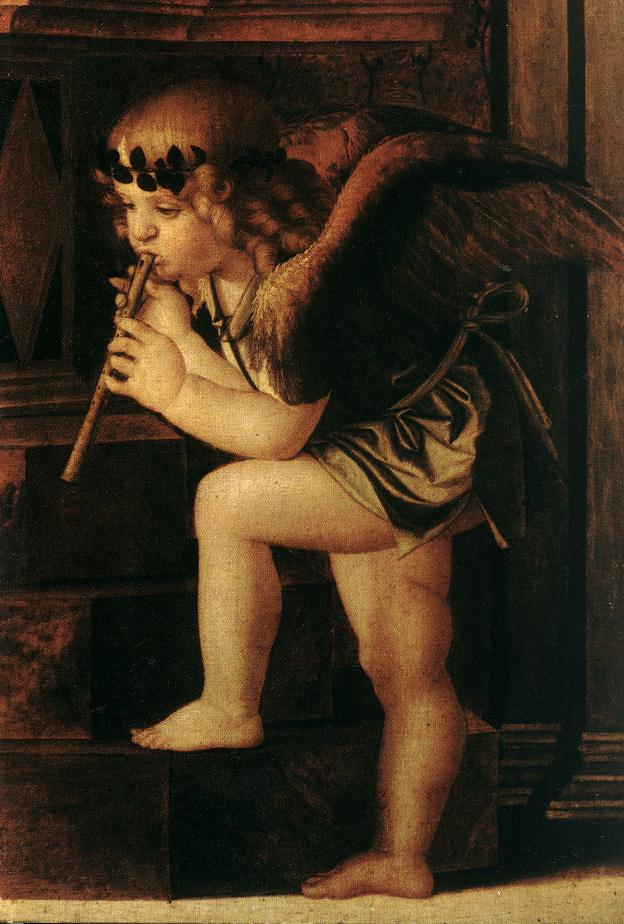 this day in 1735. Anton Diabelli, an Austrian music publisher and composer was born on the same day in 1781. Diabelli is remembered for a very different reason. He had an interesting idea: he wrote a theme and then asked important (mostly Austrian) composers to write one variation, which he then collected and published. For that purpose he composed an unpretentious waltz in C-Major. 51 composers responded, Schubert, Czerny, Hummel, and Moscheles among them. The 12-year old Liszt also submitted an entry (Diabelli didn’t ask him directly, but Czerny, Liszt’s teacher, was eager to demonstrate his student’s talents). One composer responded on a different scale: Beethoven came up not with one but with 33 variations, which became known as Diabelli Variations. Beethoven’s last composition for piano, op. 120 is one of the most profound pieces in piano literature (when played well -- when played poorly, it’s a bore).
this day in 1735. Anton Diabelli, an Austrian music publisher and composer was born on the same day in 1781. Diabelli is remembered for a very different reason. He had an interesting idea: he wrote a theme and then asked important (mostly Austrian) composers to write one variation, which he then collected and published. For that purpose he composed an unpretentious waltz in C-Major. 51 composers responded, Schubert, Czerny, Hummel, and Moscheles among them. The 12-year old Liszt also submitted an entry (Diabelli didn’t ask him directly, but Czerny, Liszt’s teacher, was eager to demonstrate his student’s talents). One composer responded on a different scale: Beethoven came up not with one but with 33 variations, which became known as Diabelli Variations. Beethoven’s last composition for piano, op. 120 is one of the most profound pieces in piano literature (when played well -- when played poorly, it’s a bore).
Three more composers were born on the same day: Giacomo Meyerbeer, who in the mid-19th century was the most popular opera composer in Europe, and two Americans: Amy Beach, born in 1867, and John Cage, in 1912.
Then on September 6th comes the birthday of Isabella Leonarda, who was born in 1620 in Novara, a town west of Milan. When she was 16, the entered a convent and remained there for the rest of her life (she died in the convent at the age of 84, in 1704). Therefore, no interesting events in her life to report. Even though it’s said that she hadn’t started composing till the age of 50, she wrote more than 200 compositions. Her music was well known in Novara but not much in the rest of Italy. Here’s her Sonata Duodecima from 1693 for violin and continuo, performed by the violinist Riccardo Minasi and the ensemble with a whimsical name Bizzarrie Armoniche.
On September 7th we celebrate the birthday of Hernando de Cabezón, born in Madrid around that date in 1541 (we know that he was baptized on the 7th). Hernando was the son of Antonio de Cabezón, also a composer. In 1563 Hernando was appointed organist at Sigüenza Cathedral and stayed there till July of 1566, when his father died and he took his place as the organist to the King Philip II. The King presided over the Golden Age of Spain, when the empire reached its zenith in influence and size. Here’s a song called O bella, from a collection of music compiled by one Octavius Fugger. It’s performed by the French ensemble Charivari Agréable.
September 8th marks the 175th anniversary of the birth of Antonin Dvořák. One of the greatest Czech composers, he excelled as a symphonist; he also wrote chamber music and nine operas, one of which, Rusalka, remains very popular to this day. Here’s his Piano Quintet, op. 81, performed by Quintessence Piano Quintet. Two Englishmen follow, Henry Purcell on the 10th – he was born in 1659, and William Boyce on the 11th of September (Boyce was born in 1711). Purcell, who died tragically young at the age of 36, was one of the greatest English composers of all time. Here’s his When I am laid in earth, from Dido and Aeneas. Jessye Norman is the soprano; English Chamber is conducted by Raymond Leppard. And of course we should remember that Arvo Pärt was also born on the 11th, in 1935.Permalink
August 29, 2016. Bruckner’s Third Symphony. Next Sunday, September 4th, is the birthday of Anton Bruckner, who was born in 1824. The last two years we've celebrated this date with presentations of his Fourth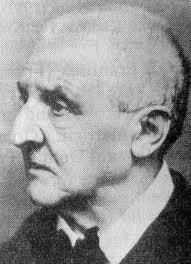 and Fifth symphonies. This time we’ll jump back several years and talk about what many consider his breakthrough work, Symphony no. 3. We had mentioned Bruckner’s notorious lack of confidence, his tendency to rewrite compositions over and over again. In this sense, the Third Symphony is one of the worst examples: there are six different editions of it. The first version was written in 1873. At the time Bruckner was living in Vienna, where he had moved to five years earlier from Linz. He assumed a teaching position at the Vienna Conservatory and became the organist at the Court Chapel, a prestigious but unpaid position. That year Bruckner, who adored Richard Wagner, visited him in Bayreuth and showed him the manuscripts of two symphonies, the Second and the Third, the latter still not complete. Bruckner asked Wagner which one he liked better. Wagner picked the Third, and Bruckner dedicated the symphony to him. The symphony was premiered four years later, the first performance taking place in Vienna on December 16th of 1877. By all accounts, it went badly. The conductor who was supposed to lead the orchestra, one Johann von Herbeck, died unexpectedly on October 28th of that year. Bruckner himself had to step in. He was a decent choral director but quite inexperienced with large symphony orchestras. The Third is about one hour long; the orchestra wasn’t playing well, the public was leaving in droves and by the Finale the hall was almost empty. To make matters worse, Eduard Hanslick, the influential Viennese music critic, a Brahms supporter and Wagner’s detractor, followed the performance with a scathing review. Not everybody disliked the Symphony, however: Mahler, for one, thought enough of it to arrange it for two pianos.
and Fifth symphonies. This time we’ll jump back several years and talk about what many consider his breakthrough work, Symphony no. 3. We had mentioned Bruckner’s notorious lack of confidence, his tendency to rewrite compositions over and over again. In this sense, the Third Symphony is one of the worst examples: there are six different editions of it. The first version was written in 1873. At the time Bruckner was living in Vienna, where he had moved to five years earlier from Linz. He assumed a teaching position at the Vienna Conservatory and became the organist at the Court Chapel, a prestigious but unpaid position. That year Bruckner, who adored Richard Wagner, visited him in Bayreuth and showed him the manuscripts of two symphonies, the Second and the Third, the latter still not complete. Bruckner asked Wagner which one he liked better. Wagner picked the Third, and Bruckner dedicated the symphony to him. The symphony was premiered four years later, the first performance taking place in Vienna on December 16th of 1877. By all accounts, it went badly. The conductor who was supposed to lead the orchestra, one Johann von Herbeck, died unexpectedly on October 28th of that year. Bruckner himself had to step in. He was a decent choral director but quite inexperienced with large symphony orchestras. The Third is about one hour long; the orchestra wasn’t playing well, the public was leaving in droves and by the Finale the hall was almost empty. To make matters worse, Eduard Hanslick, the influential Viennese music critic, a Brahms supporter and Wagner’s detractor, followed the performance with a scathing review. Not everybody disliked the Symphony, however: Mahler, for one, thought enough of it to arrange it for two pianos.
Bruckner started revising the symphony almost as soon as he finished it. In 1874 he created the first revision, mostly by re-orchestrating parts of it. Then, in 1876, he rewrote the second movement, Adagio. Another version followed in 1877 – that’s the version Bruckner gave to Mahler who used it for his two-piano arrangement. By mid-1880s Bruckner’s music became more acceptable. The Third Symphony was performed in several German cities and in the Netherlands, and was brought to New York (it was performed at the old Metropolitan Opera house). That didn’t stop Bruckner from tinkering with it. In 1889, twelve years after the premier, he returned to the Third and created another edition, and then, just one year later, yet another one. The version we’ll hear is from 1889. The Munich Philharmonic Orchestra is conducted by one of the most interesting interpreters of the music of Bruckner, the Romanian-born Sergiu Celibidache who at the time was the Principal conductor of the Munich Philharmonic. As are all Bruckner’s symphonies, the Third is in four parts. The first movement Gemäßigt, mehr bewegt, misterioso (Moderate, more animated, mysterious) runs about 25 minutes (here); the second, Adagio, sixteen and a half (here); the third, Scherzo, is just shy of eight minute (here), and Finale, Allegro (here), is about 15 minutes long.Permalink